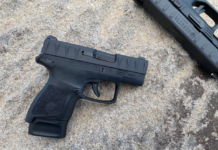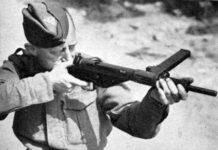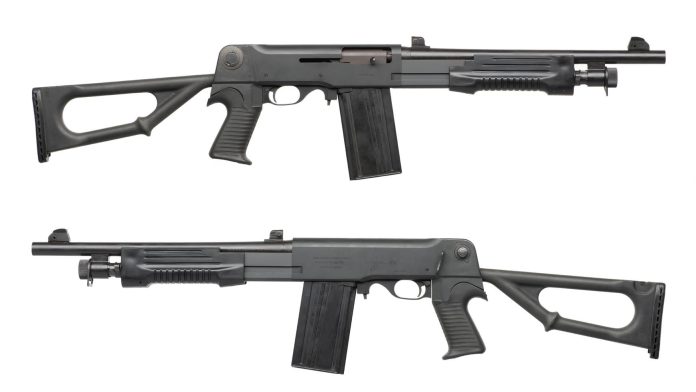
The 1980s was a fun time for shotguns, especially police and military shotguns. Rifles hadn’t edged them out and were still very popular for police use across the world. The 1980s saw the rise of shotguns that could be swapped from semi-auto to pump-action and back again. The most famous is the SPAS-12, the most successful is the Benelli M3, and the most forgotten is the Beretta M3-P.
Enter the M3-P
Beretta didn’t produce the M3-P in huge numbers, but a scan of auction websites has shown at least a few made it to the United States. The general idea behind convertible shotguns was the ability to use the weapon primarily as a semi-auto combat weapon, but the user can swap to pump action for lower power loads. Often, these low-power loads would be non-lethal. This was before the era of a dedicated non-lethal shotgun alongside a standard fighting gun.
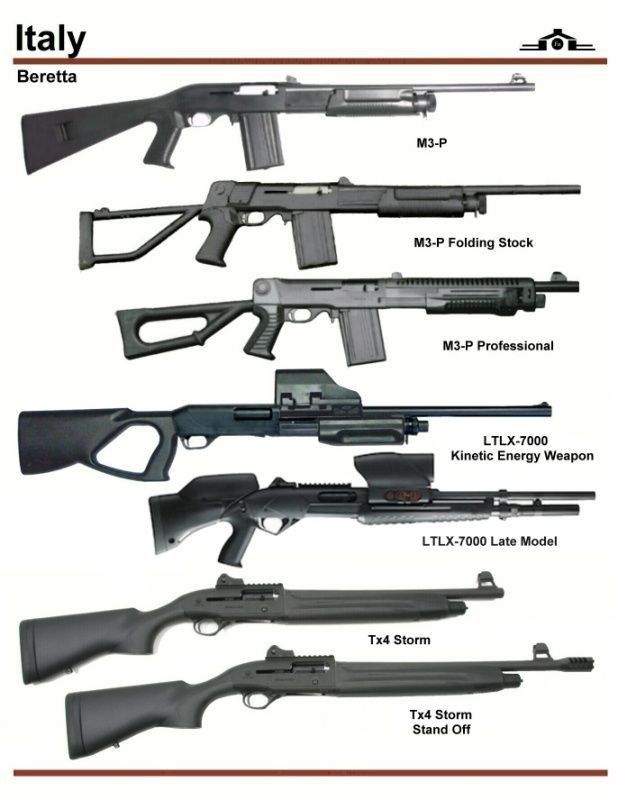
The Beretta M3-P stands out amongst the crowd because it utilizes a box magazine. Specifically, a five-round box magazine instead of your normal tubular design. The M-3P’s use of box magazines made sense when you considered the role and intent of the shotgun. If you want a shotgun that can handle a variety of munitions, then the M3-P makes sense. You could swap magazines to swap munitions and instantly swap to a dedicated magazine for different types of ammo.
Your black mags can be buckshot, your blue ones can be slugs, your orange could be less lethal, and so on and so forth.
The M3-P Family
This was an entire family of firearms or was at least planned to be. The most common models seem to be the M3-P folding stock models. The M3-P folding stock had a barrel length that fell between 15 and 24 inches. The stock folded upwards and over the top of the shotgun where it could double as a carry handle.

There was also the Professional model with a shorter barrel and more robust sights, as well as a heat shield and a different pump design. This gun also had a folding stock. There was also a sporting version with a 24-inch barrel and a fixed stock. The Folding stock and Professional models are confirmed to have fixed chokes, but it’s unclear if the sporting model has a different choke system.
The M3-P series used a gas-operated system for semi-auto operation. A ring at the end of the forearm converted the gun to pump action. It likely disabled the gas system and unlocked the pump. The magazine release was placed in front of the trigger guard, and looking at the pictures, it looks as if the magazine is locked at the front and rocks in at the rear.
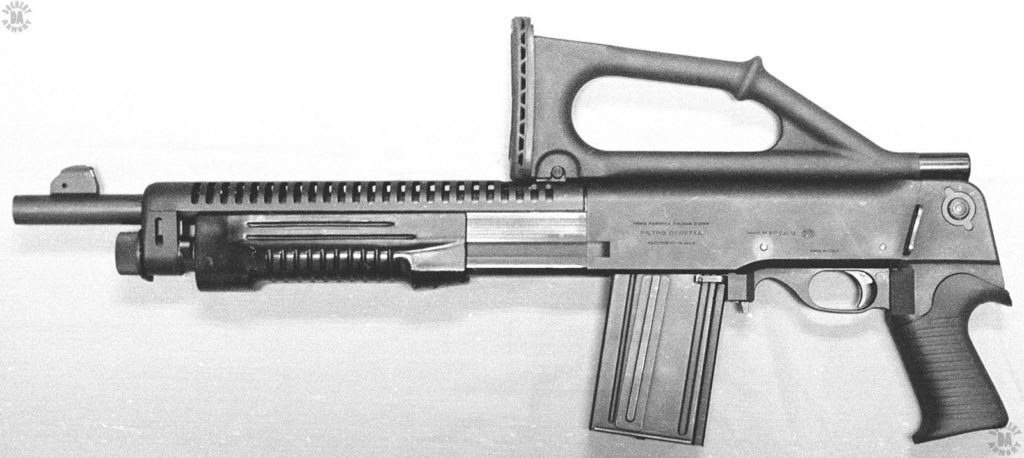
The Fate of the Forbidden Beretta
The reason why we saw so many dual-system shotguns in this era was because there was a real want for them. Police and military units desired the configurability of a semi-auto shotgun that could be used in a pump action format. The Italian police ended up choosing the Benelli M3, as did a few armed forces. The Franchi SPAS-15 series went to the Italian military. The M3-P was used by the French RAID Police Unit.
The RAID guys have a history of weird shotguns, so it’s not a giant surprise the RAID guys had the M3-P. I could do an article on RAID shotguns. The M3-P had limited success, and it seems like hardly any made it to the States. It’s likely the few that did were samples to gather interest. Either way, they tend to be rare, and fetch a pretty penny. Sadly, I don’t think I’ll ever get one in my collection.


